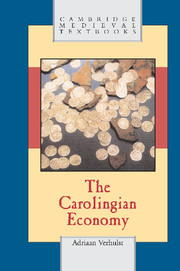6 - Organisation
Published online by Cambridge University Press: 05 June 2012
Summary
Concerning commerce and trade one must be careful not to transpose in a simple way concepts and realities of today to the early Middle Ages. Commerce today means profit but not always in those centuries were goods sold and bought out of such motives. Buying and selling were often done out of necessity, not by professional merchants but by the producers and consumers themselves. In those cases money could be replaced by goods, as when for example abbot Adalhard of Corbie in his instructions (Statuta) for the economy of the abbey household from the year 822 ordered that the production surplus of its gardens should be sold either for money or for grain (venundetur aut contra denarios aut contra annonam). Simple exchange without money also took place on a certain social level either as gifts of valuables between kings, princes and members of the aristocracy on some occasions, but also for more ordinary goods, such as lead or salt, for example between abbots when their abbey was in need of them and could not obtain them by purchase for some reason (e.g. scarcity). Such transactions were sometimes considered as commercial by local agents and unjustly subjected to tolls. Tolls in principle were indeed levied only on commercial goods. Some historians even propose for the Carolingian economy the model of a double circulation circuit: a privileged one of producers and consumers buying and selling out of necessity and not for profit, through agents at their service, and a superimposed circuit of free professional merchants working for profit by means of money only and subjected to tolls.
- Type
- Chapter
- Information
- The Carolingian Economy , pp. 87 - 96Publisher: Cambridge University PressPrint publication year: 2002

